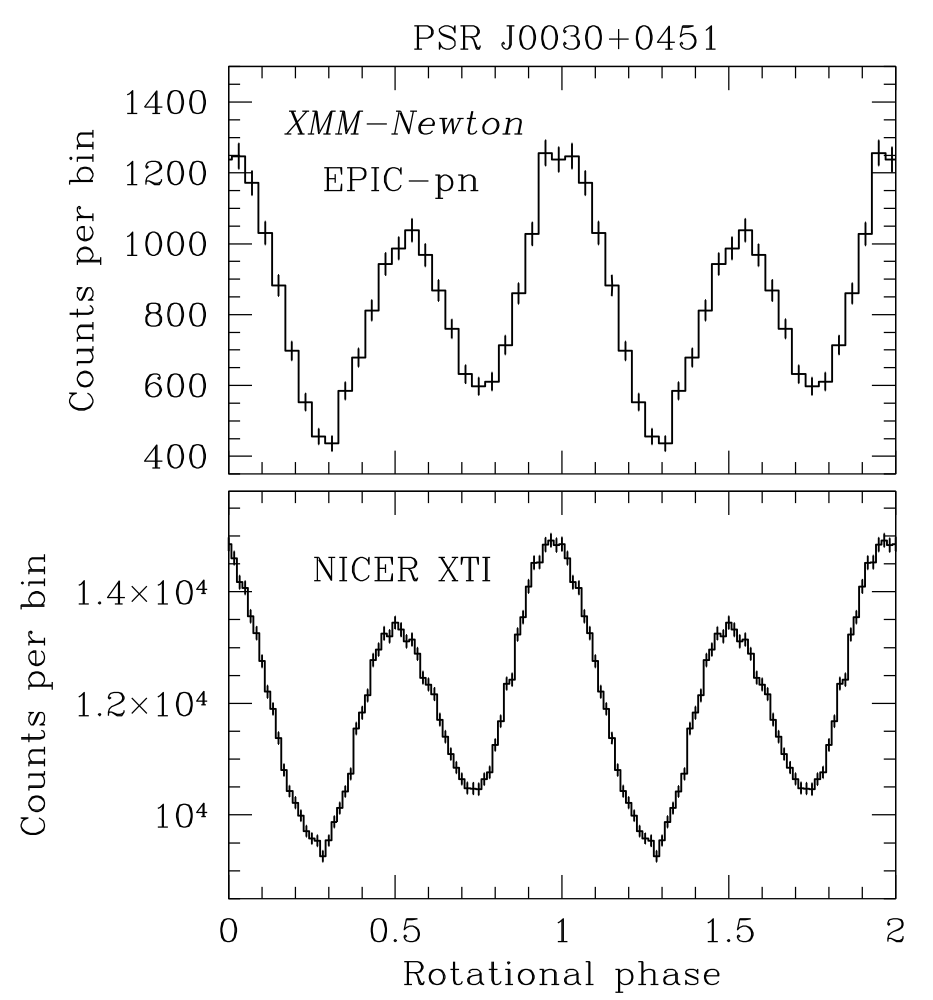NICER / ISS Science Nugget for January 18, 2018PSR J0030+0451 pulsations as seen by XMM-Newton and NICEROne of NICER's primary science goals is to determine the radius of several neutron stars with a precision of 5%. This is being done by several methods. One method involves looking in detail at the shape of millisecond pulsar light curves to look for strong gravity effects. Specifically, the compactness (M/R) where M is the neutron star mass and R is the radius is a parameter that describes gravitational light bending. Large compactness leads to strong gravitational light bending. The pulses from many neutron stars are the result of hot spots on the surface of the neutron star coming into and out of our field of view as the star spins. Strong gravity can cause us to see the backside of the star- allowing us to watch a hot spot go around to where we would otherwise we would not see it without gravitational light bending. PSR J0030+0451 is one neutron star for which NICER is building a very long exposure to make such a measurement.
As of January, NICER has accumulated 1.08 million seconds (Msec) of data on PSR J0030+0451. It will take a total of 1.6 Msec needed to achieve a 5% measurement of the pulsar's radius. NICER
|



